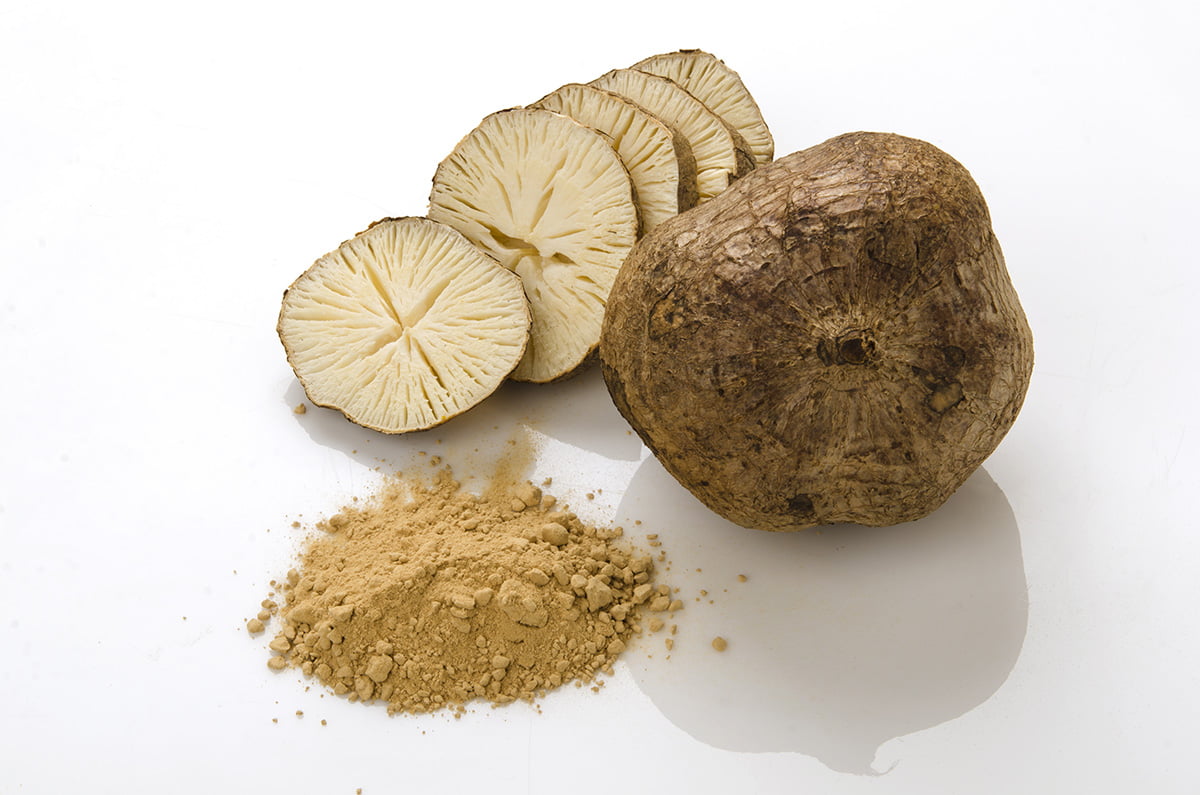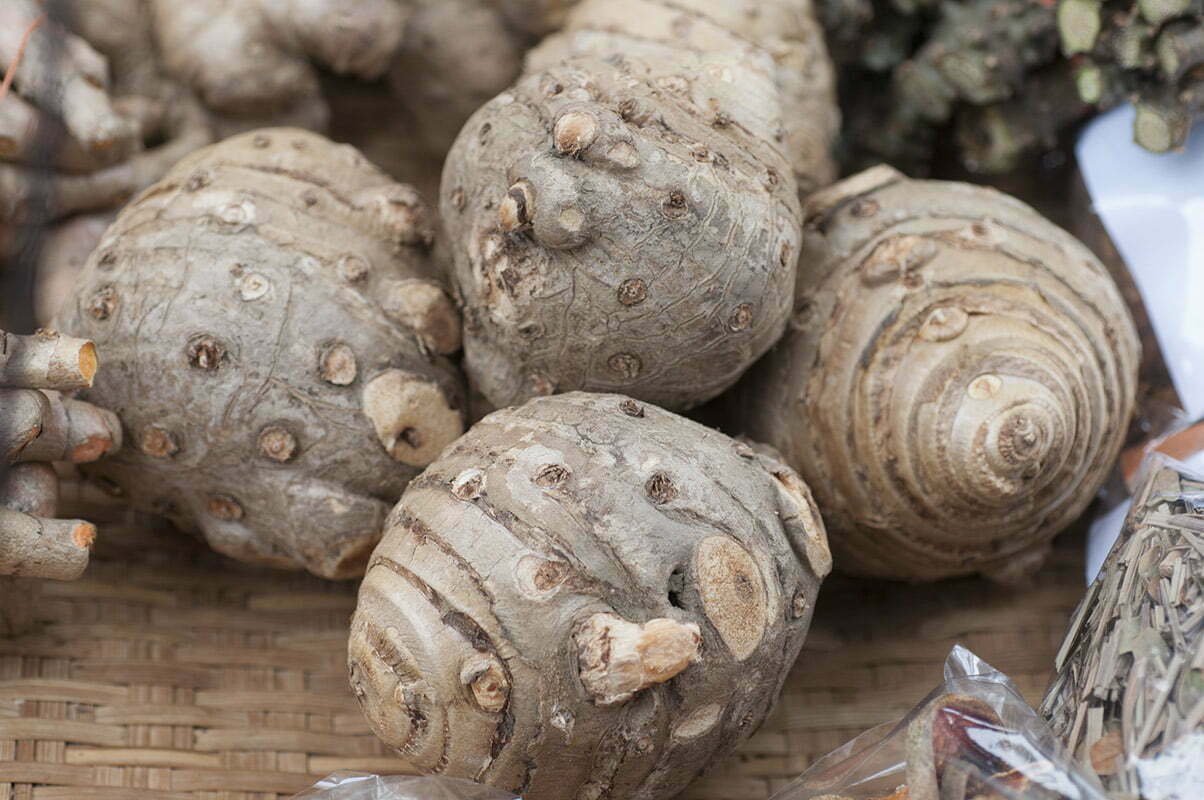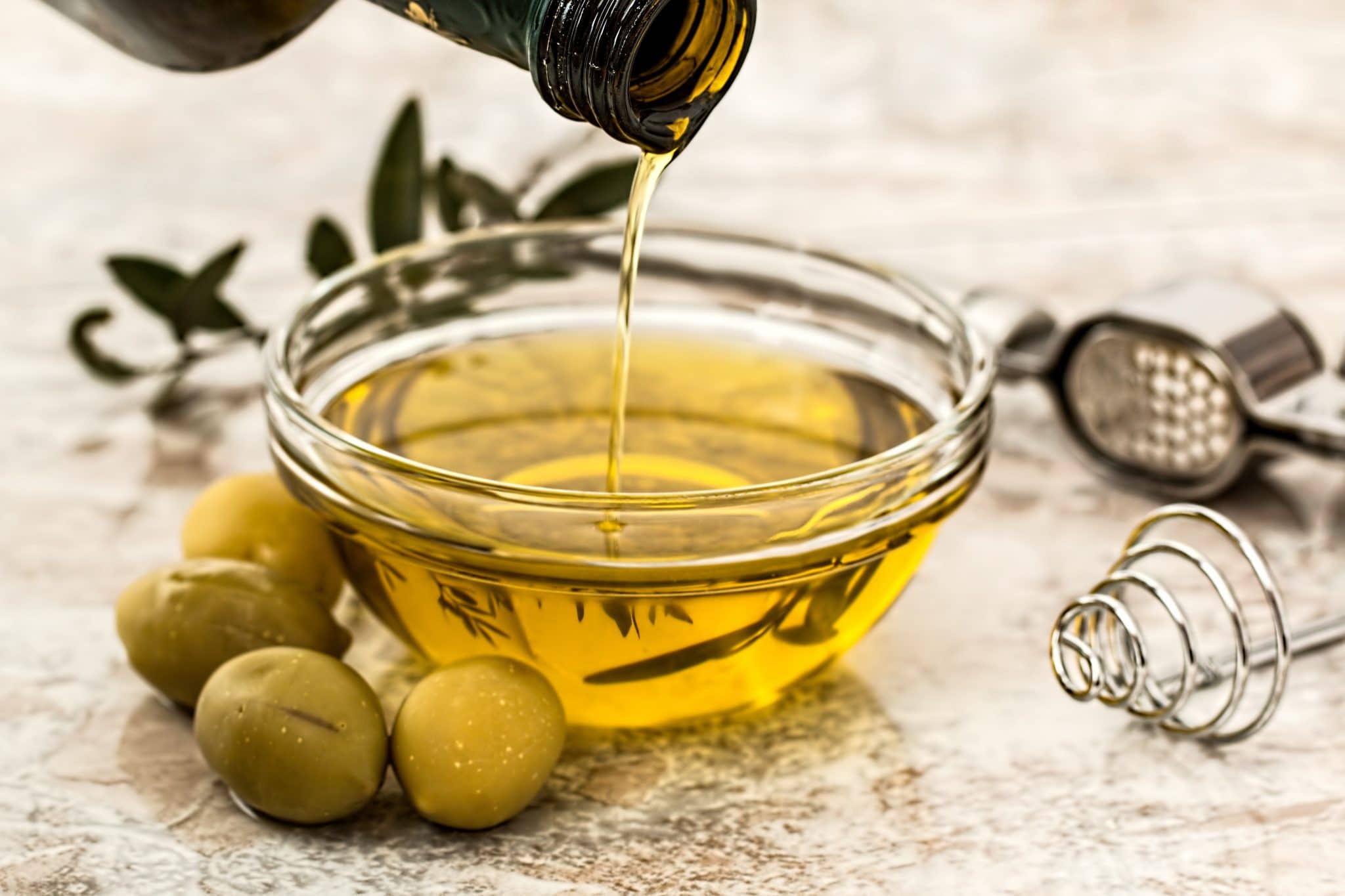Pueraria Mirifica (P. Mirifica) is a plant native to northern Thailand. It is also known as White Kwao Krua or White Krao Krua. There are also red and black varieties of Pueraria Mirifica and they all boast a variety of uses. These uses range from breast enhancement to bone health, all the way to assisting with symptoms of menopause.
This article serves as an all-encompassing account of the herb Pueraria Mirifica. We will cover what the Pueraria Mirifica is, the history of the herb, how it affects breast size and firmness, and its many uses for women’s and men’s health.
What is Pueraria Mirifica?
Pueraria Mirifica is closely related to Pueraria Lobata (also known as Kudzu)—a plant that grows abundantly in the southeast of the United States. It was originally planted there to help prevent soil erosion. In addition, Pueraria Mirifica is from the legume family and—more specifically, the bean branch. This plant is related to soybeans and has some of the same characteristics. For example, both contain phytoestrogens.

The root of Pueraria Mirifica, which is the part of the plant that is utilized, consists of small round tubers connected by rootlets. The shape of these tubers and rootlets may differ slightly due to the terrain from which they were grown.
History of Pueraria Mirifica
While most records show that Pueraria Mirifica has only been in use for around one hundred years, documents, such as texts on palm leaves that survived the attack of Kublai Khan, indicate that this plant was used by monks in Burma (Myanmar) during and before the 13th century.
The original text (translated) reads:
Take the tuberous root of Pueraria with big leaves, pound, and blend with cow’s milk. The benefits of this medicine is to support memory, talk big, and be able to remember three books of the astrology, make the skin smooth like six-year-old kid, live more than 1,000 years and parasite diseases are not able to be of trouble.
Later on, the West became interested in the plant in the 1930s thanks to the work done by Dr. Arthur Francis George Kerr (1877-1942), who was then the director of the Botanical Section of the Journal of the Siam Society.
Dr. Kerr brought attention to the plant by insisting it had rejuvenating properties in the 1932 journal; this publication is still in existence and represents one of the first Western documentation of the herb. Extensive studies have been executed since.
Studies, Uses, and Health Benefits
Women in Thailand are the primary users of this herb, though men have also found it helpful. Traditional uses for Pueraria Mirifica include breast enhancement, skincare, memory improvement, appetite stimulant, and dealing with perimenopause and post-menopause symptoms. The herb is openly sold in Thai markets, and culturally, it is known that women who ingest Pueraria Mirifica proudly boost the firmness and size of their bosoms.
These uses and side effects are supported by scientific studies done on the herb.
Phytoestrogens
Many formal studies done on Pueraria Mirifica have been about its effects on the mammary glands (breasts) and on other parts of the reproductive system.
The first studies completed were done to determine the chemical components of the plant. Their findings showed a high amount of phytoestrogens within the plant, which are substances found in plants that produce effects similar to the hormone estrogen when ingested.
To understand the impact of this, it is necessary to know that estrogen isn’t one substance. Rather, it is a group of related chemicals. The human body produces three types of estrogen: estradiol, estrone, and estriol. Estriol, for example, is almost undetectable in women who are not pregnant, and it is produced in large quantities in women who are pregnant.
In the case of Pueraria Mirifica, it contains a high concentration of a phytoestrogen called miroestrol. Miroestrol has the greatest estrogenic activity among all phytoestrogens extracted from the plant, and it is considered the safest estrogen for humans.
Improving Breast Size and Firmness
Given that Pueraria Mirifica contains these phytoestrogens, studies have been done to test their effects. A study done on rats showed a multitude of effects. For example, a four-week administration of Pueraria Mirifica to non-operated rats at a dose of 3% showed a significant elevation of cell proliferation in the mammary glands.
Secondly, Pueraria Mirifica administered to ovariectomized animals at doses of 0.03%, 0.3%, and 3% of body weight in a phytoestrogen-low diet for two weeks caused a significant increase in uterus weight.
Additionally, a human study done in Japan—where daily doses of 100mg to 600mg were administered to the participants—showed an increase in breast firmness and size after just 12 weeks. The double-blind study involved 50 women between the ages of 20 and 49 years old. The findings also found that 70% from each group had an increase in breast size and firmness.
Similarly, tests done by Chulalongkorn University in Thailand discovered that Pueraria Mirifica usage was able to increase breast size by as much as 80%.
Breast Augmentation and Options
Breast augmentation is not new. There have been a variety of ways women in the past have made their breasts look larger, such as with corsets, by wearing pads, and push-up bras. At least one story exists of a woman using a wax bosom to make her breasts appear larger.
How can one increase breast size today? Here we explore the benefits and disadvantages of why Pueraria Mirifica is a viable option for women seeking breast augmentation.
Herbs
There are many herbs that claim to help with breast enhancement. One such herb is of course Pueraria Mirifica.
While it is relatively new to the Western herb market, Pueraria Mirifica has been used for a long time by women in Thailand and breast augmentation is one of its main purposes. As previously mentioned, the phytoestrogen in this herb is considered the safest kind.
Menstruation
Studies done with Pueraria Mirifica and its benefits were also done on monkeys. The study published in the Journal of Pharmacological Sciences in 2003 involved the investigation of how Pueraria Mirifica acts on the menstrual cycle.
To do this, they examined four groups of female monkeys. One was a control group, the other three were given 10, 100, and 1,000 mg/d of Pueraria Mirifica starting on their first day of the menstrual cycle. This treatment lasted for three cycles.
The study results showed that the first two groups taking the herb, those at 10 and 100 mg/d, had menstrual cycle lengths that increased significantly. Furthermore, the menstrual cycles in the group taking 1,000 mg/d of Pueraria Mirifica disappeared completely.
Related Studies on Pueraria Mirifica

A human study was done to test the herb’s effect on endometrial tissue, in part for stem cell research. The study did not determine whether or not it changed the cycle length but it did conclude that there was more endometrial proliferation, especially at 1,500 and 2,000 mg doses. No change was found in those with 10, 100, 500, or 1,000 mg doses.
This test was not done on live humans but on test cells. It was in this way that the rate of cell growth could be more easily monitored. However, it should be noted that the suggested dosages of the herb do not have undue effects on the menstrual cycle of humans.
Menopause
One of the things that women fear about menopause is developing osteoporosis. Brittle bones break a lot easier and they don’t mend as quickly. Sometimes, just putting a foot down in the wrong way will break bones.
A lot of work has been done on this topic because not only is it painful, but it can also be deadly. Broken bones can lead to being immobilized which leads to all kinds of complications. In earlier times, a broken hip in an elderly person was almost always terminal.
According to a 2008 study published on Ovid, there is evidence that the estrogen components of Pueraria Mirifica can help bones make calcium. The bone turnover rate, as it’s called, was significantly higher in women taking the herb than in those taking the placebo. This particular study involved 71 women between the ages of 45 and 60 years—54 of them took 10, 50, or 100 mg of the plant.
Vaginal Dryness
One of the major problems after menopause is the lack of secretions in the vagina. This lack isn’t just uncomfortable; it can lead to significant health problems including atrophy. A 2017 study published in Ovid compares the use of Pueraria Mirifica cream to that of estrogen cream.
Both groups improved with no side effects. What’s more, this improvement did not last after treatment stopped, meaning the application of the Pueraria Mirifica cream indeed improved vaginal dryness.
Hair Loss/Graying
Studies have shown that Pueraria Mirifica reduces the rate of graying hair and that it will reverse or prevent hair loss. Another study found on the issue of graying was from a related plant to Pueraria Mirifica, P. Lobata. According to this study, it it can reduce the rate of graying, but it does not bring back color to hair already present.
As for hair loss, keep in mind that this herb contains several types of estrogen. Both male and female pattern baldness are caused by an imbalance between estrogen and testosterone. This does not mean that women start producing more testosterone. It is about maintaining balance.
During perimenopause and post-menopause, the levels of naturally produced estrogen decrease. When this happens, there is an imbalance that allows the naturally occurring testosterone to damage hair follicles. Plants containing phytoestrogens are a natural way of combating this issue.
Skin
Wrinkles, crow’s feet, and laugh lines are all a common part of aging for both men and women. In men, it’s said to give them character. Women, on the other hand, aren’t given as much leeway. There have been a number of ways women (and some men) have countered this. A well-known actor of the past had his wife reach behind and pull his neck skin back when he was on camera so that he looked younger. Facelifts, tape, and botox have all been used. However, they can leave scars, are short-lasting, and can at times be dangerous.
Pueraria Mirifica contains more than just estrogenic compounds. It contains antioxidants and the combination, as found by a study published in the Journal of Fertility and Sterility in 2005, can help reduce wrinkles. Other studies, done on an informal basis, have shown the same result. To note, women can also develop excess facial hair because of the hormone imbalance.
Memory
Several herbs have shown some benefits when it comes to aiding memory. Gingko Biloba and ginseng have both been touted for those purposes and they have been found to be quite useful. However, these two herbs have several side effects that must be taken into consideration. Gingko is a blood thinner, and ginseng has adverse effects on those suffering from rheumatoid diseases.
Pueraria Mirifica does not have either of these issues. In a controlled study of mice, it was found that the use of the main constituent of the herb, miroestrol, helped mice with cognitive impairment improve their ability to learn. Empirical data from Thailand also suggests this is a positive use.
Appetite Stimulant
There are two ways Pueraria Mirifica (and estrogen consumption in general) affect the appetite. In small doses, it may inhibit it and thus help with weight loss. However, in therapeutic doses, it is much more likely to increase appetite. While this isn’t good news to younger people who want to lose weight the easy way (there isn’t one), it is good news for older folks.
All of these can lead to malnutrition, severe weight loss, and dizziness. Malnutrition can cause deficiency diseases and decrease immunity. Being dizzy can lead to dangerous falls, especially for the elderly. It can also lead to impaction of the colon and the possibility of a rupture. For these reasons, a proper appetite is important alongside any herbal supplement.
There are several herbs that can help boost appetite, but many of them can cause problems. One herb used is capsaicin. However, the elderly usually cannot tolerate the heat, and there are also drug/herb interactions one must consider.
The antioxidants and estrogens in Pueraria Mirifica do not carry these risks. In fact, the estrogens, when taken in slightly larger quantities, boost the appetite. This in turn encourages the person to eat sufficiently.
Intaking Pueraria Mirifica
There are two ways to extract the useful constituents of Pueraria Mirifica for topical use. The best method involves a combination of oil. Take 1 cup of olive oil, add 1 tsp powdered Pueraria Mirifica and allow it to sit for six weeks in a cool, dark area. Strain before using it as the powder will not completely dissolve.

You can add ¼ tsp Vitamin E oil and a few drops of a skin-friendly essential oil as well. These essential oils include rose, bergamot, and frankincense. If the oil is unpleasant it can be mixed with cocoa butter or shea butter at a 50/50 ratio.
The second best method uses vodka. The reason for this choice is that it is an undenatured alcohol, but it also isn’t likely to cause alcohol poisoning. Use the same technique and amounts as with olive oil extraction.
Dosages
Clinical studies suggest 200-400 mg per day for most people. Manufacturers suggest 250 mg twice daily. This information is based on the body mass of an average woman. If you are larger or smaller than the average, then discuss dosage with your doctor.
Safety Issues
Like prescription medications, no herb is without side effects, drug interactions, and interactions with illnesses. Studies of Pueraria Mirifica have shown it to be safe for most people. Also, it should be noted that safety may not mean life-threatening. It can just mean an effect that is undesirable.
Concerns for Intaking Pueraria Mirifica
Men
Yes, men can take this herb. However, several things may occur that are not desirable for men. What makes a woman’s breasts grow larger will make a man’s breasts grow larger. The estrogen levels may also reduce male libido.
Transgender men are beginning to look into phytoestrogens as a means of growing breasts. This can happen, but care must be taken with dosage. Overdosing on any estrogen product can cause serious side effects, including deep vein thrombosis.
Cancer
Pueraria Mirifica has been shown to reduce breast cancer in small doses. However, studies show that at higher doses, there is a basis for concern as Pueraria Mirifica acts like estrogen and can cause estrogen-related cancers and tumors.
A study was done to show that postpubertal administration of soy isoflavones at estrogenic doses promotes mammary and endometrial carcinogenesis in Donryu rats. This data questions the safety of long-term exposure to phytoestrogens like Pueraria Mirifica.
Allergies
This is a problem with anything that is ingested. The body can react against it, causing an allergic reaction. Allergic reactions can be minor such as causing hives, sneezing, and headaches, among other effects. However, severe allergic reactions can cause anaphylactic shock which is deadly without immediate treatment. This causes the tongue and throat to swell, which can cause asphyxiation and potentially death.
Cardiac Complications
According to the Breast Enhancement Options website there is a small chance of cardiac complications by taking Pueraria Mirifica. Some people with heart problems have reported increased angina. Those who have heart conditions are recommended to avoid Pueraria Mirifica.
Herb and Drug Interactions
Weight loss drugs do not go well with Pueraria Mirifica. The combination can cause problems with the heart. It is also suggested that it shouldn’t be taken with birth control medications. Corticosteroids, hydantoin medications, and thyroid medications can also interact poorly with Pueraria Mirifica and should be avoided in combination.
Individuals with epilepsy, diabetes myelitis, asthma, migraines, and lupus should also avoid using Pueraria Mirifica as it can all be aggravated by the use of this herb.
Lipids
At least one study has shown that there may be a relationship between Pueraria Mirifica and increased triglyceride levels. This is also true of those who took regular HRT drugs. If lipid levels are a concern, ingestion of Pueraria Mirifica should be avoided.
Excessive Menstrual Flow
This is not an uncommon side effect and usually stops after taking the supplement for a while. However, if symptoms of anemia occur, then check with your doctor.
Overdose
Most of what is known of overdose come from animal studies. Increased length of the menstrual cycle, an increased risk of reproductive cancers, and more growth of endometrial cells are examples of the consequences of overdosing on Pueraria Mirifica. Additionally, one person reported having a deep vein thrombosis but that is extremely rare.
How is This Product Available
Thailand has been taking steps to keep the growing and production of this plant legal within the country. Like other countries, they are worried that foreign investors will patent the plant and reap the profits. This includes selling their products to the people of Thailand at a higher price. Thus far, Thailand is the only place Pueraria Mirifica grows.
However, products made from Pueraria Mirifica are available all over the internet. It comes as a powder (best mixed with smoothies), as well as in creams, tablets, and capsules. There are some who recommend Pueraria Mirifica to be a prescription-only product. This isn’t the case in the United States, but it might be in other countries. For this reason, local laws should always be adhered to.
Before Buying or Taking Pueraria Mirifica
It is very important to talk to someone who knows your medical history, what you are already taking, and knowledge of the chemical constituents of any herb you plan to take. The first person to talk to is your doctor. Many doctors have started to study herbs and their potential. Others have a computer database to draw conclusions from.
Even if your doctor has this information, be sure to talk to your pharmacist. Pharmacists often catch drug/drug interactions that doctors miss and are just as important for drug/herb interactions. The third person you should consult is a qualified herbal practitioner. Those who are qualified have studied more than just the herb’s effects. All three are essential to safeguard your health.
It is also important to note that this article is not to take the place of any of the three consultations described above. This article is for information only and should be taken as such. Please do thorough research on your own and be sure to consult a doctor before taking Pueraria Mirifica.
Frequently Asked Questions
Pueraria Mirifica contains phytoestrogens that mimic estrogen’s effects, promoting breast size and firmness. It’s also used for skincare, memory improvement, and alleviating menopausal symptoms.
Pueraria Mirifica contains potent phytoestrogens, particularly miroestrol, with high estrogenic activity, making it effective for breast enhancement and other health benefits.
Individuals with hormone-sensitive conditions, heart issues, or those on specific medications should avoid Pueraria Mirifica due to potential risks and interactions.
While not explicitly mentioned, Pueraria Mirifica’s traditional uses include addressing various health issues, suggesting potential anti-inflammatory properties, but further research is needed for confirmation.
